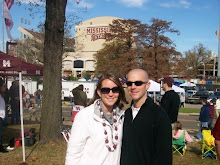Bausum, A. (2000). Dragon bones and dinosaur eggs: a photobiography of
Explorer Roy Chapman Andrews. Washington D.C.: The National Geographic Society.
Summary:
This is a biography of explorer Roy Andrews. The book begins with Andrews as a young boy who would sit for hours and observe wildlife and document it in a journal that he kept with him at all times. It describes his hunting skills and the unique ability for taxidermy. After college, Andrews went to the American Museum of National History, where the only job he could get was cleaning floors in the taxidermy department. Over time, his duties grew to include little jobs like writing labels and mixing clay for models. The book describes his progression from floor cleaner to general assistant to being sent to excavate whale bones. The director was so impressed with the job that Andrews had done in recovering the complete whale skeleton that he was sent on expeditions. Andrews accomplished many things on these expeditions, from taking the first photograph of a whale to traveling to Mongolia and finding never before seen dinosaur bones and eggs. After his many, many years of expeditions, Andrews returned to America to become the director of the American Museum of National History.
Ages:
Grades 5th through 9th
Credibility of Author:
The author was assisted in writing this biography by the National Geographic Society, the American Museum of National History and its Special Collections Library, Beloit College and archives, Beloit Historical Society, Beloit Public Library, Logan Museum of Anthropology, George Borup Andrews, and Charles Gallenkamp.
National Standards that this book relates to:
The Social Studies standards addressed are People, Places, and Environments. The Science standards addressed are Science as Inquiry and Life Science.
Access Features:
This book has a foreward written by Roy Andrews son, George Borup Andrews. It also contains an afterword, a chronology of events in Andrews’ life, a resource guide that can be used to find additional articles, books, videos, etc, and an index.
Description of the Illustrations:
The photographs are actual photos taken of Andrews and during his expeditions. They are black and white and do a wonderful job documenting Andrews’ life. The photographs came from the American Museum of National History.
My response to the book:
I really enjoyed this book and learned a lot by reading it. I had never read a book about the actual expeditions that were taken to find dinosaur bones. This book did a great job detailing how the people made it through the expeditions. It talked about how their things were carried, what they ate, what the camels ate during droughts, what they did during their spare time, etc.
How I would use this book in my class:
Because I teach the lower grades, I would probable not read this entire book to my class, but would definitely read the excerpts about the expeditions and that process that it took to get the bones that long ago. I would also allow them time to view all the great photographs.
Monday, June 25, 2007
Subscribe to:
Post Comments (Atom)


2 comments:
Rocks in His Head sounds like it's a similar story--the main character studies rocks rather than dinosaur bones.
Brooke,
The title of this book alone made me want to read it, but your presentation added to that.
Debbie
Post a Comment